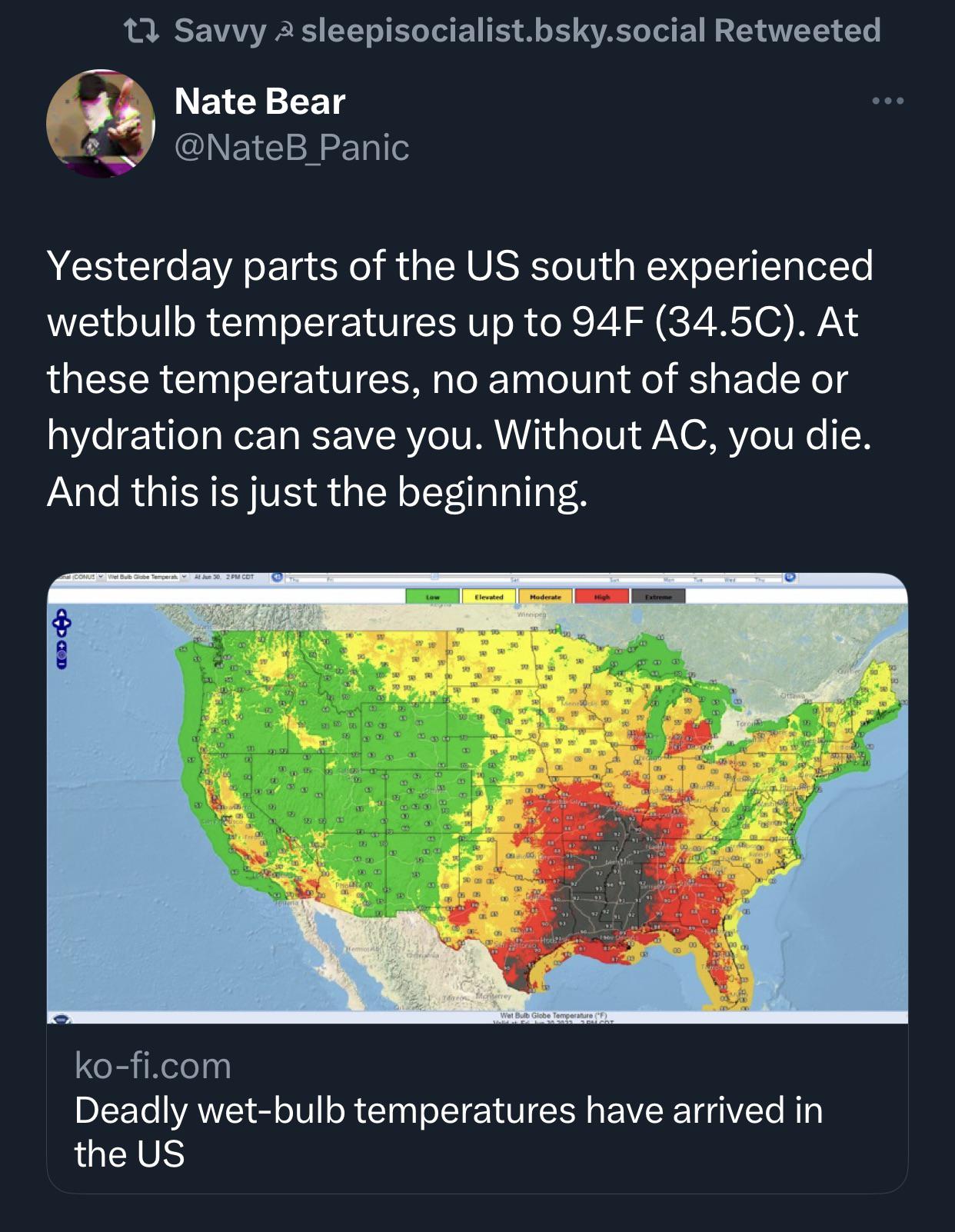this post was submitted on 02 Jul 2023
43 points (95.7% liked)
Collapse
3240 readers
1 users here now
We have moved to https://lemm.ee/c/collapse -- please adjust your subscriptions
This is the place for discussing the potential collapse of modern civilization and the environment.
Collapse, in this context, refers to the significant loss of an established level or complexity towards a much simpler state. It can occur differently within many areas, orderly or chaotically, and be willing or unwilling. It does not necessarily imply human extinction or a singular, global event. Although, the longer the duration, the more it resembles a ‘decline’ instead of collapse.
RULES
1 - Remember the human
2 - Link posts should come from a reputable source
3 - All opinions are allowed but discussion must be in good faith.
4 - No low effort posts.
Related lemmys:
- /c/green
- /c/antreefa
- /c/gardening
- /c/nativeplantgardening@mander.xyz
- /c/eco_socialism@lemmygrad.ml
- c/collapse@sopuli.xyz
- /c/biology
- /c/criseciv
- /c/eco
founded 4 years ago
MODERATORS
you are viewing a single comment's thread
view the rest of the comments
view the rest of the comments

What’s the difference between wet bulb temperature and regular temperature?
Wet bulb is when you take a thermometer and pour water over it then lightly blow air onto it then reading the temperature.
It simulates cooling through evaporation and this post basically means you could drench yourself in water and still die from the heat.
Wet bulb is the temperature of the air along with factoring in for the humidity present in the air. The amount of heat the human body can endure is directly impacted by it's ability to reduce its temperature via sweat. Now sweat works by cooling the body when it evaporates off of the skin. When humidity is so high it impedes sweat from evaporating it becomes much more dangerous because the body is unable to cool itself. This is why the heat can be tolorable at 100 degrees in the desert, but the same temperature will kill you in a swamp.
Per wikipedia: The wet-bulb temperature is the temperature read by a thermometer covered in water-soaked cloth over which air is passed. At 100% relative humidity, the wet-bulb temperature is equal to the air temperature; at lower humidity the wet-bulb temperature is lower than dry-bulb temperature because of evaporative cooling.
Living organisms can survive only within a certain temperature range. When the ambient temperature is excessive, many animals cool themselves to below ambient temperature by evaporative cooling (sweat in humans and horses, saliva and water in dogs and other mammals); this helps to prevent potentially fatal hyperthermia due to heat stress. The effectiveness of evaporative cooling depends upon humidity; wet-bulb temperature, or more complex calculated quantities such as wet-bulb globe temperature (WBGT) which also takes account of solar radiation, give a useful indication of the degree of heat stress, and are used by several agencies as the basis for heat stress prevention guidelines.
A sustained wet-bulb temperature exceeding 35 °C (95 °F) is likely to be fatal even to fit and healthy people, unclothed in the shade next to a fan; at this temperature human bodies switch from shedding heat to the environment, to gaining heat from it.[9] In practice, such ideal conditions for humans to cool themselves will not always exist – hence the high fatality levels in the 2003 European and 2010 Russian heat waves, which saw wet-bulb temperatures no greater than 28 °C.
it combines humidity with temperature, too high and your sweat does not evaporate and your body gains heat from the environment instead of shedding heating into the environment
wikipedia
https://en.m.wikipedia.org/wiki/Wet-bulb_temperature